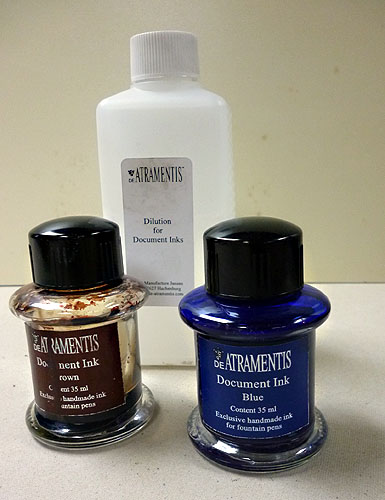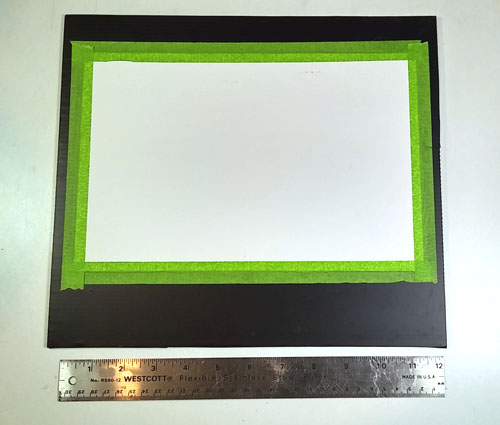Recently I wrote about the new Platinum gall inks and noted that they aren’t waterproof in the way that watercolorists need them to be waterproof. They’re more like the Noodler’s “bulletproof” claim of water resistance. You couldn’t remove a signature from a check, but the color bleeds when these inks are used on good watercolor paper. The reasons may be different for Noodler’s vs Platinum gall inks but the results are the same.
Many of us have spent a lot of money trying to find a truly waterproof brown ink we can shove through our fountain pens. Heck, I spent $30 on the Platinum ink even after I’d found a really good solution just because I was curious. Anyways, my post on the Platinum inks resulted in some discussion and I thought I’d tell you about my solution.

Jane Blundell did an extensive analysis of the DeAtramentis Document inks where she mixed entire color wheels with these inks. They are all quite waterproof and fountain pen friendly. Making matters even better for the in mixer, DeAtramentis sells a “dilution solution” which is just like the ink but without the pigment. I use Document Black, diluted 5:1 (dilution:ink) to generate a dark gray that’s similar in color to Noodler’s Lexington Gray but is more waterproof and its lower contrast to white paper works better when you’re going to use watercolors on your drawings.
DeAtramentis Document Brown leans towards red, pretty close to a burnt sienna color. It works well as a sketching color but on white paper, just like black ink, its contrast is very high. I’ve tried just diluting it and that works but, to my eye, it accentuates the red component of the ink and I’ve never liked that very much. So, what to do.
 Mix a bit of blue with it, that’s what. Just like mixing ultramarine blue to burnt sienna, if you mix in enough blue you get gray. But if I add only a few drops of blue, I get a nice, walnut brown that works really well for me. I’m not going to tell you how many drops or anything like that. Achieving the color YOU want will require a bit of trial and error on your part. Personally, I don’t worry about too much. I mix small quantities, and test with a dip pen until I get the color I want. The next time I might get a slightly different color. I don’t really care because my goal is to tone down the contrast of the ink with the paper, not achieve some particular color.
Mix a bit of blue with it, that’s what. Just like mixing ultramarine blue to burnt sienna, if you mix in enough blue you get gray. But if I add only a few drops of blue, I get a nice, walnut brown that works really well for me. I’m not going to tell you how many drops or anything like that. Achieving the color YOU want will require a bit of trial and error on your part. Personally, I don’t worry about too much. I mix small quantities, and test with a dip pen until I get the color I want. The next time I might get a slightly different color. I don’t really care because my goal is to tone down the contrast of the ink with the paper, not achieve some particular color.
To the cost of this adventure. A bottle of Document Brown (35ml) will cost you around $20 and the dilution solution (250ml) is another $20. That’s pretty expensive but, depending upon how much of the dilution solution you use, you also end up with a lot of ink. Adding another $20 for a bottle of blue really boosts the price and I’d recommend just buying a sample unless you plan on drawing with blue. It doesn’t take much to achieve the shift shown above.
Finally, here’s a drawing I started on one of the few outdoor sketching days we’ve had thus far. Watercolor will come but for now you can see the results of my “walnut” ink. I think the contrast here is a bit more in the scan than on paper.

Fabriano Artistico (9×12), Pilot Falcon, DeAtramentis Document Brown + blue









